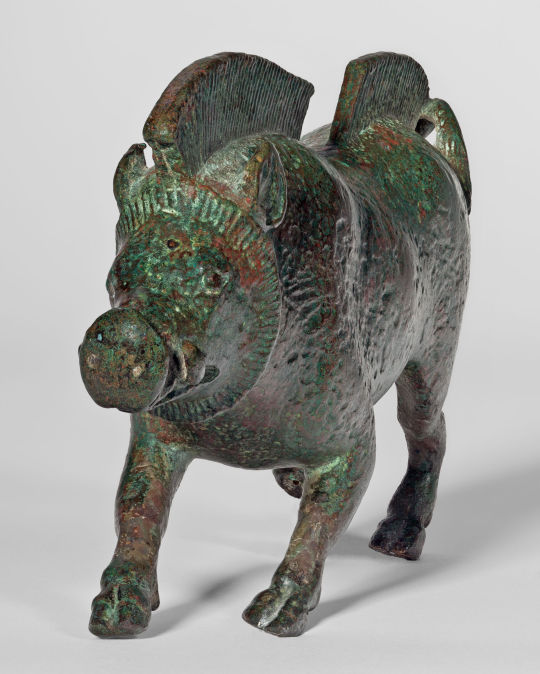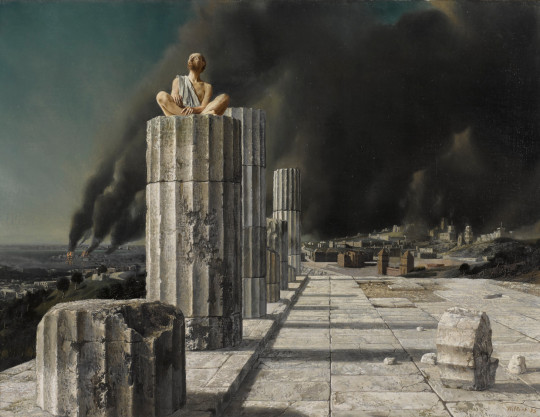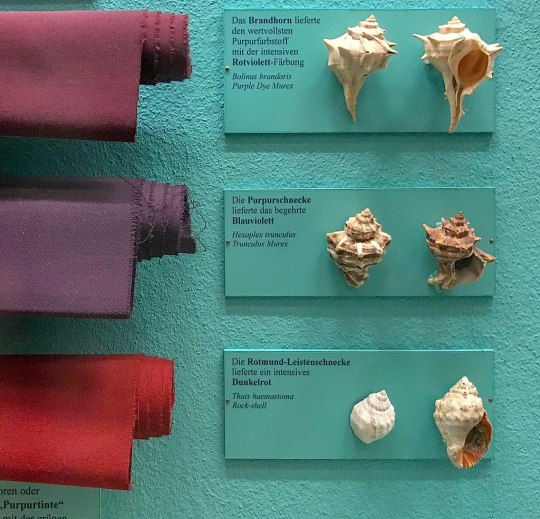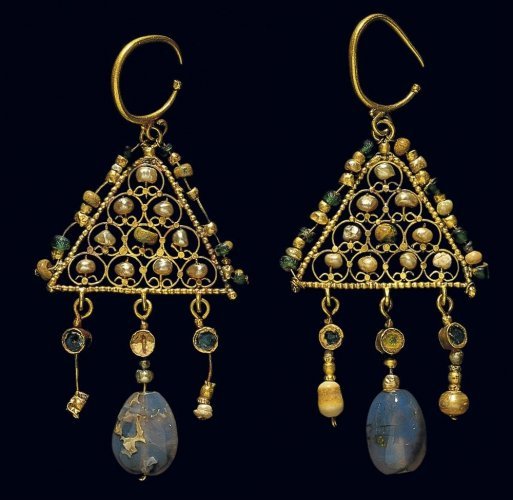#history: byzantine
Explore tagged Tumblr posts
Text

A Byzantine Gold Collier with Emeralds, Sapphires, Amethysts and Pearls, from a workshop in Constantinople (late 6th-7th Century AD).
#byzantine history#byzantine art#byzantine#gold jewelry#antique jewelry#antique#gold#gold necklace#necklace#constantinople#toya's tales#style#toyastales#toyas tales#fashion#art#clothing#november#fall#artifact#antiquities#art history#jewelry#jewellery#jewelry history#world history#emeralds#amythest#sapphire#pearls
6K notes
·
View notes
Text

Henri-Benjamin Constant de Rebecque (Franco-Swiss, 1767-1830) Théodora (La Emperatriz Theodora), 1887
#empress of the empire#theodora#empress#Henri-Benjamin Constant de Rebecque#Benjamin Constant#1887#1800s#art#fine art#european art#classical art#europe#european#fine arts#oil painting#europa#franco#swiss#swiss art#switzerland#queen#Byzantine empress#Byzantine#world history#real people
2K notes
·
View notes
Text

I will be taking your city and your body, beloved emperor.
(Mehmed the Conqueror x Constantine XI Palaiologos in the Hagia Sophia. Don’t come at me, this is what happened according to Greek historians 🌚)
It will be the anniversary of the Fall of Constantinople soon, and I hope to draw something for that too.
#my art#illustration#mehmed the conqueror#mehmed ii#ottoman empire#old man yaoi#byzantine empire#tw blood#toxic yaoi#history rpf
1K notes
·
View notes
Text


Bronze figurine of a boar, Byzantine, 6th century AD
from The Harvard Art Museums
2K notes
·
View notes
Text
Shout out to Porphyrios, the whale who terrorized the waters near Constantinople for more than 50 years during the 6th century.
You'd sunk more Roman warships than most of their human enemies.
#roman history#byzantine history#roman empire#byzantine empire#new roman empire#eastern roman empire#constantinople#rome#history#porphyrios
3K notes
·
View notes
Text

Fragment of a linen tunic from Egypt, dating to the 5th or 6th century AD/CE, when the province was part of the East Roman (Byzantine) Empire. The fragment features clavus bands with a red ground and black border; within the bands are polychrome figures of animals. Each band ends in a pendant medallion of inset wool. The tunic is now in the Cooper Hewitt, Smithsonian Design Museum, New York City, NY, USA. Photo credit: Cooper Hewitt.
#art#art history#ancient art#Egypt#Ancient Egypt#Roman Egypt#Byzantine Egypt#Byzantine#Byzantine Empire#Byzantine art#textiles#textile art#fiber arts#textile arts#tunic#linen#Cooper Hewitt
644 notes
·
View notes
Text

The "Rubens Vase," an Agate Hardstone Carving of c. A.D. 400,
Carved in high relief from a single piece of agate, this extraordinary vase was most likely created in an imperial workshop for a Byzantine emperor.
It made its way to France, probably carried off as treasure after the sack of Constantinople in 1204 during the Fourth Crusade, where it passed through the hands of some of the most renowned collectors of western Europe, including the Dukes of Anjou and King Charles V of France.
In 1619, the vase was purchased by the great Flemish painter Peter Paul Rubens (1577-1640). A drawing that he made of it is now in Saint Petersburg, State Hermitage Museum, inv. 5430.
The subsequent fate of the vase before the 19th century is obscure. The gold mount around its rim is struck with a French gold-standard mark used in 1809-1819 and with the guarantee stamp of the French departement of Ain.
A similar late Roman agate vessel, the "Waddesdon Vase" or "Cellini Vase," in now in the British Museum, London.
The Walters Art Museum, Baltimore, Maryland.
#art#history#design#style#archeology#sculpture#antiquity#collectors#vase#peter paul rubens#roman#agate#walters art museum#hardstone#hand carved#vessel#byzantine#imperial
629 notes
·
View notes
Text
Byzantine history be like:
In 874 Emperor Kostalogous IV ascended to the throne after blinding sixteen nephews, and married his wife, Theodora.
However, he soon ran afoul of the Patriarch of Constantinople, Theopelagionikus, and his wife Theodora.
In 895 he was deposed by his general, Justiniapelomaxorianous II, and his wife Theodora.
This created nine new church schisms.
3K notes
·
View notes
Text

Byzantine Gold Necklace with Amethyst Beads Byzantine, 6th century A.D. Gold and Amethyst
#Byzantine Gold Necklace with Amethyst Beads#Byzantine#6th century A.D.#gold and amethyst#jewelry#ancient jewelry#ancient artifacts#archeology#archeolgst#history#history news#ancient history#ancient culture#ancient civilizations#byzantine history#byzantine empire#eastern roman empire#byzantine art#ancient art#byzantine jewelry
688 notes
·
View notes
Text


~ Solidus with Licinia Eudoxia.
Period: Byzantine, Reign of Valentinian III
Date: A.D. 439
Mint: Ravenna
Medium: Gold
#ancient#ancient art#history#museum#archeology#ancient history#archaeology#coin#ancient currency#ancient coin#money#solidus#Licinia Eudoxia#Valentinian III#Byzantine#Byzantium#gold#Ravenna
1K notes
·
View notes
Text

Simeon the Stylite by Carel Willink
#carel willink#art#simeon stylites#simeon the stylite#christian#ascetic#asceticism#christianity#saints#saint#monk#syria#syrian#aleppo#pillar#pillars#stylites#history#religious art#religion#esoteric#cilicia#roman empire#byzantine#ruins#architecture#stylite
227 notes
·
View notes
Note
hello! my grandmother is a porcelain painter and she was talking about how purple pigments are absurdly more expensive than the other ones because they actually use gold in making it. i know the purple pigment used for dying clothes also used to be extremely expensive before the advent of artificial ones, but i never heard of it coming from gold. i was wondering if you knew whether this was also the case or if they came from a completely different process that also happened to be super expensive. thanks in advance for the reply!
I think the confusion here comes from different pigments being used for different purposes. Also it's important to note that historically purple didn't really mean what it means today, like a violet, but rather a deep sort of aniline red, like wine red or scarlet red.
Purple of Cassius was a pigment used for coloring glass, painting porcelain and glazing. It's formed by reaction of gold salts and tin chloride. The colour is very much what we'd consider red today. Here's purple of Cassius glass and porcelain saucers painted with it.


This was not used to dye fabric though, but purple pigment for fabrics was very expensive for entirely different reasons. The most deep purple in the ancient world was called Tyrian purple. It was extracted from shells of sea snail from the family Muricidae. It required a lot of shells and a lot of labour, which is why it was so expensive. The dye was originally created as early as 1200 BC by Phoenecians of Tyre, where the name comes from, and it's production was continued by the Greeks and the Romans. The method was still known by the Byzantinians after the fall of Western Rome, but was lost in Europe after Byzantine fell in 15th century. Before the invention of the synthetic mauveine pigment in 1856, there wasn't similar colourfast deep purple pigments like Tyrian purple for centuries. Of course there were still purple fabric, the shades were just less bright and deep and they often suffered a lot from colour fading.
The shades that could be produced with Tyrian purple were also mostly red to modern eyes, here's some sample recreated in modern times.

The custom of purple toga worn by male Roman citizens was likely adopted from Etruscans. Here's first a fresco of Etruscans in purple toga-like garments and then a fresco of Roman purple toga. Byzantine royalty continued to favour Tyrian purple. The last example is a Byzantine mosaic.



So you are indeed correct that both pigments came from very different sources but were independently super expensive!
#answers#anon#fashion history#history#textile history#textiles#dyeing#antique rome#byzantine#painting
189 notes
·
View notes
Text

necklace with a cross pendant of gold, glass, pearl, garnet, and sapphire. byzantium, early period c. 500s a.d.
263 notes
·
View notes
Text



Pushing my Ottoman Empire and Mehmed the Conqueror x Tepes brothers agenda at you
#history#ottoman empire#balkan history#mehmed the conqueror#vlad the impaler#byzantine empire#history rpf
613 notes
·
View notes
Text

Gold earrings with glass beads, pearls, and sapphires, Byzantine, 5th-6th century AD
from The Benaki Museum, Athens
2K notes
·
View notes
Text
Why am I just now finding out that Greek Fire was invented by a Jew??
Apparently he fled Syria after the Arab conquest and gave the recipe to the Byzantine Emperor so that they could repel the Arab naval fleet approaching Constantinople.
0% Greek but 100% everything is on fire
#jumblr#Jewish inventions#apparently include Greek fire#which is was made by a Jew born in Syria on behalf of the byzantines#so 0% Greek#but very fire#mizrahim#mizrahi history
365 notes
·
View notes